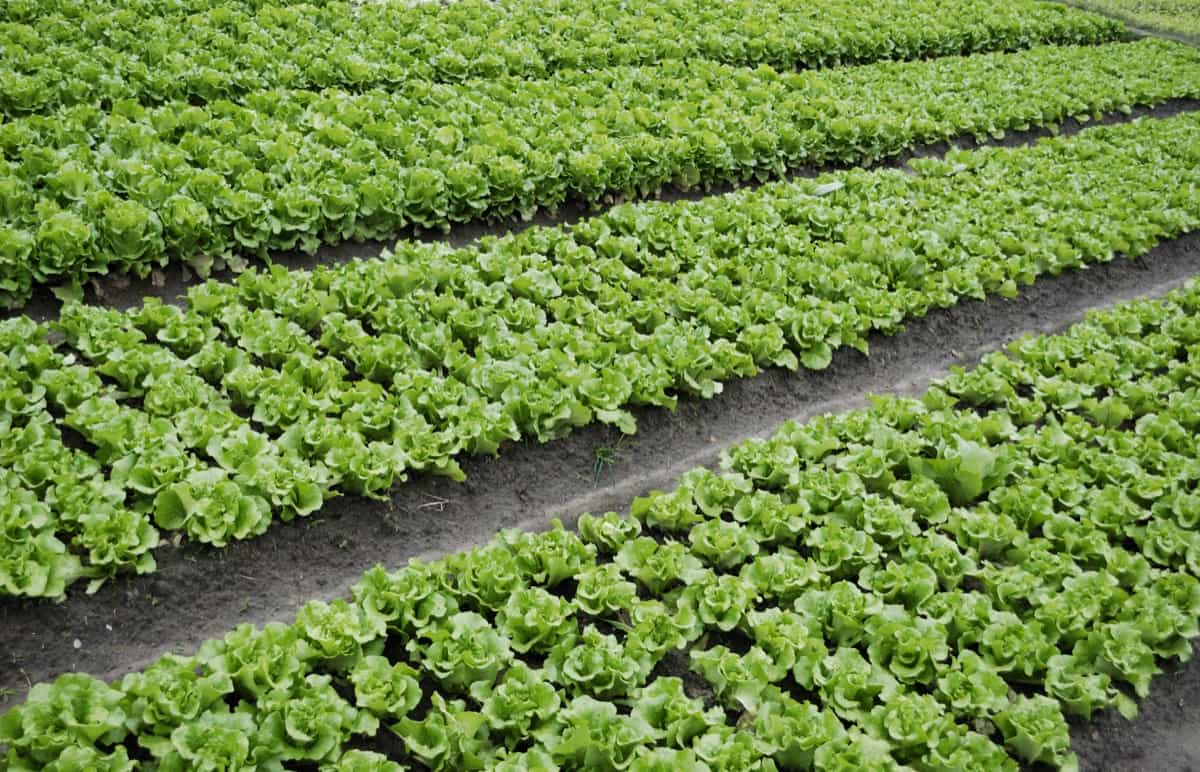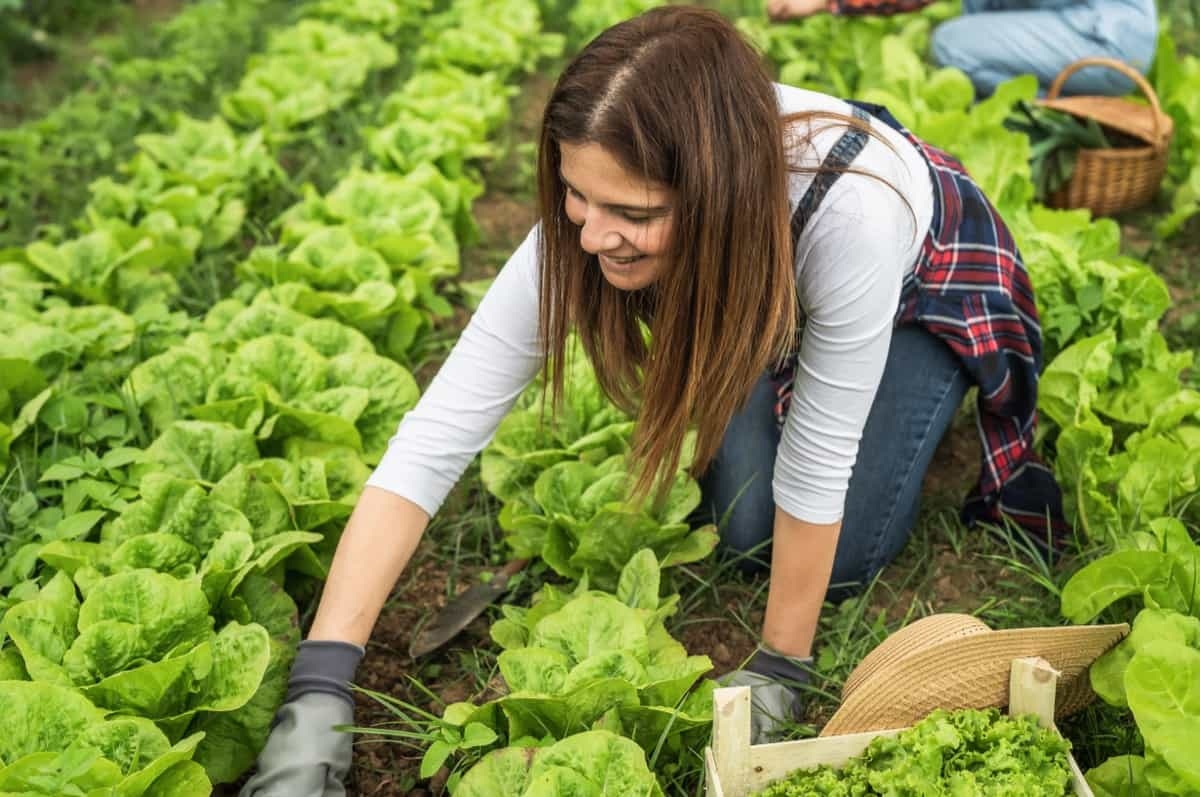Thanks to the state’s favorable climate and fertile soil, lettuce farming has become a popular agricultural venture in California. As one of the top lettuce producers in the United States, California offers ample opportunities for farmers to cultivate this nutritious and versatile crop. Here we learn about a step-by-step guide on how to start lettuce farming in California, from planting to harvesting.

How to Start Lettuce Farming in California
Understanding Lettuce Production in California
California leads the nation in lettuce production, with most of the crop grown in the Salinas Valley, also known as the “Salad Bowl of the World.” The state’s mild Mediterranean climate allows for year-round production, making it an ideal location for lettuce cultivation. In California, iceberg lettuce is the most widely grown variety, followed by romaine, butterhead, and leaf lettuces. Familiarize yourself with the different types of lettuce and choose the one that best suits your market and growing conditions.
Preparing the Soil
Before you begin lettuce farming, properly preparing the soil is essential. Lettuce thrives in well-drained, fertile soil with a pH between 6.0 and 6.8. Start by testing the soil to determine its pH level and nutrient content. If necessary, amend the soil with lime or sulfur to achieve the desired pH. Additionally, incorporate organic matter, such as compost or aged manure, into the soil to improve its structure and fertility.
Selecting and Purchasing Seeds or Stumps
When it comes to growing lettuce, you can start from seeds or stumps (transplants). Seeds offer a wider variety of choices and are more cost-effective, while stumps can save time and labor. Purchase high-quality seeds or stumps from a reputable supplier, ensuring they are disease-free and suitable for your region’s climate.
Planting Lettuce from Seeds
To plant lettuce seeds, create shallow furrows approximately ¼ inch deep and 12 to 18 inches apart. Scatter the seeds evenly along the furrow, aiming for spacing of 1 seed per inch. Gently cover the seeds with soil and water them thoroughly. Keep the soil consistently moist, as lettuce seeds require moisture to germinate. Germination should occur within 7 to 10 days, depending on the variety and environmental conditions.
Planting Lettuce from Stumps
To plant lettuce stumps, dig holes that are large enough to accommodate the root ball of each transplant. Put the holes anywhere from 12 to 18 inches apart, depending on the species and the final product’s head size. Place the stumps in the holes, ensuring the root ball is completely covered with soil. Water the transplants thoroughly and maintain consistent soil moisture to promote healthy root development.
Time Taken from Seed to Harvest
Growing period for lettuce from seed to harvest varies with the type of lettuce and the growing circumstances. Generally, leaf lettuces mature in 45 to 60 days, while head lettuces, such as iceberg and romaine, require 70 to 85 days. Lettuce is a cool-season crop that may grow more slowly in warmer temperatures.
In case you missed it: Hydroponic Lettuce Farming in a Greenhouse: Key Rules to Start from Scratch

Irrigation and Fertilization
Lettuce requires consistent soil moisture to thrive, so it’s crucial to establish a regular irrigation schedule. It is possible to water plants directly at the root zone by using drip irrigation or soaker hoses. This will be the most effective method for preventing disease as well as evaporation loss. Maintain a close eye on the amount of moisture that is present in the soil, and modify the amount of water that you apply accordingly.
Fertilize your lettuce plants with a balanced, slow-release fertilizer when planting. As the plants grow, side-dress them with nitrogen-rich fertilizer to promote healthy leaf development. Tip burn and other problems might result from applying too much nitrogen fertilizer, so proceed carefully.
Proper Thinning and Spacing
To ensure optimal growth and prevent overcrowding, thin your lettuce plants once they have developed two to four true leaves. For leaf lettuces, thin the plants to a spacing of 4 to 6 inches apart, while head lettuces should be spaced 8 to 12 inches apart, depending on the variety.
Shade and Temperature Management
High temperatures can cause lettuce to bolt, which refers to the process of premature flowering, or cause the leaves to taste bitter. Lettuce is a crop that is grown throughout the cool season. To prevent these issues, provide shade for your lettuce plants during hot weather by using shade cloth or planting taller crops nearby to create natural shade. Additionally, monitor the temperature and consider using evaporative cooling systems or misters to maintain optimal growing conditions.
Pest and Disease Management
Lettuce is susceptible to various pests and diseases, including aphids, slugs, cutworms, and diseases such as downy mildew and lettuce mosaic virus. Monitor your crop regularly for signs of infestation or disease and implement integrated pest management (IPM) strategies, such as crop rotation, biological control, and resistant varieties. If necessary, apply chemical controls judiciously, following label recommendations and local regulations.
Harvesting and Post-Harvest Handling
When it’s time to harvest your lettuce, use a sharp knife to cut the heads or leaves at the base, taking care not to damage the surrounding plants. Harvest in the early morning when the temperatures are cooler, as this helps preserve the lettuce’s quality and shelf life.
After harvesting, rinse the lettuce thoroughly to remove any dirt or debris. If you’re selling your lettuce to a wholesale market, it’s essential to cool the produce quickly to maintain freshness. Use a hydro-cooler or vacuum cooler to reduce the temperature of the lettuce to around 34°F within a few hours of harvest. Pack the lettuce in clean, well-ventilated containers, and store it in a cool, dark place until it’s time for delivery.
Marketing Your Lettuce
Developing a marketing plan for your lettuce is crucial to the success of your farming venture. Identify your target market, which may include local grocery stores, farmers’ markets, restaurants, or wholesale buyers. Establish relationships with buyers and promote your lettuce through social media, farm tours, and other marketing activities.
In case you missed it: How to Start Lettuce Farming in the USA: A Step-by-Step Production Guide

Conclusion
Lettuce farming in California can be rewarding and profitable, thanks to the state’s ideal growing conditions and strong market demand. Remember to continuously adapt your practices based on your specific growing conditions, market demands, and new research to ensure your lettuce farming venture’s long-term sustainability and profitability.
- Feed Your Flock for Less: Top 10 Tips to Save on Chicken Feed
- Ultimate Guide to Ossabaw Island Hog: Breeding, Raising, Diet, and Care
- Hatching Answers: The Top 10 Reasons Your Chickens Aren’t Laying Eggs
- Eggs and Economics: Breaking Down the Cost of Raising Backyard Chickens
- Defend Your Greens: Proven Methods to Keep Iguanas Out of Your Garden
- Ultimate Guide to Cinnamon Queen Chicken: A Comprehensive Guide for Beginners
- Ultimate Guide to California Tan Chicken: Breeding, Raising, Diet, Egg-Production and Care
- Ultimate Guide to Marsh Daisy Chicken: Breeding, Raising, Diet, and Care
- 10 Types of Chicken Farming Businesses You Can Start for Profits